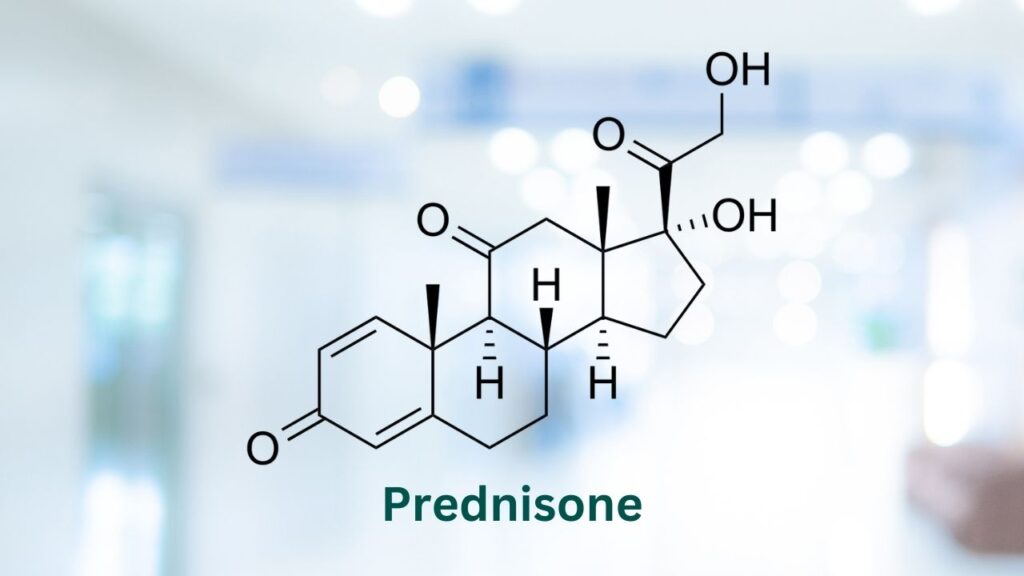Vinorelbine is in a class of chemotherapy agents called vinca alkaloids which are commonly used in veterinary medicine. Vinorelbine has been shown to be useful in treating lung tumors as well as some of the most common canine cancers, lymphoma and mast cell tumors.
Key Takeaways
- Vinorelbine is well tolerated in dogs.
- The best chemo for lymphoma in dogs at this point in time is the CHOP protocol. However, vinorelbine may be helpful as a rescue therapy.
The Details About Vinorelbine for Dogs
Vinorelbine tartrate is a chemotherapy medication used to treat a variety of cancer types. It belongs to a group of chemotherapeutics called vinca alkaloids.2 Vinorelbine is a derivative of vinblastine and similar to other vinca alkaloids such as vincristine, which are both commonly used in veterinary medicine.
In many human studies, vinorelbine has been shown to be effective for many cancer types including lung, breast, ovarian cancers, and lymphoma.2
Vinorelbine comes as a solution for injection that is often diluted with fluids and must be given through the vein.1 There are also capsules available that are not used in veterinary medicine.1
Brand Names
The brand name of vinorelbine is Navelbine.1
How Vinorelbine for Dogs Works
The main action method of vinorelbine is to stop cancer cells from separating or dividing into two new cells, therefore stopping cancer growth.
Vinorelbine acts as an antimicrotubule agent, meaning it can damage and stop the assembly of microtubules, a major component that allows cells to maintain structure and function. Destabilizing microtubules stops cancer growth by inhibiting mitosis, or division of cells.1
In a study with mice with lung cancer, vinorelbine decreased the production of growth factors associated with the formation of new blood vessels. This decreases blood supply to the tumor and may be an additional mechanism in which vinorelbine acts as an anti-cancer agent.3
Your most burning questions about chemotherapy are answered by Dr. Sue Ettinger, veterinary medical oncologist, in this episode of Dog Cancer Answers.
Common Uses of Vinorelbine for Dogs
Vinorelbine has been used as a treatment for a variety of canine cancers. There are a limited number of controlled studies using vinorelbine in veterinary medicine, but there is one study that reviewed medical records of fifty-eight dogs receiving vinorelbine over a time frame of fifteen years for a variety of different cancer types.
Primary Lung Cancer
Vinorelbine has been shown to concentrate in the lung2 and has been used to treat primary lung tumors.
Combined with surgery, the median survival time of dogs with primary pulmonary carcinoma receiving vinorelbine was 324 days. This survival time may be similar to surgery alone, and a controlled clinical trial is needed to understand if vinorelbine truly makes a significant difference for these dogs.4
About 30% of dogs with macroscopic bronchoalveolar carcinoma will respond to vinorelbine as a sole agent.2
Histiocytic Sarcoma
Vinorelbine improves outcomes in dogs with histiocytic sarcoma by decreasing lesion size. In one study, two out of nine dogs with histiocytic sarcoma lung metastasis had a complete response to vinorelbine.4
Hemangiosarcoma
A 66% response rate has been reported in dogs that received vinorelbine to treat hemangiosarcoma. Survival time was shown to increase from 15 days with no treatment to 139 days with the use of vinorelbine.5 That’s a pretty big difference!
Bladder Cancer
Vinorelbine has been shown to be helpful in canine urinary bladder carcinoma. In 57% of dogs, the disease was stabilized, and in 78% of dogs, there was an improvement in symptoms.1,6
Lymphoma
Vinorelbine is considered a reasonable rescue agent for dogs that have not had successful treatment with other chemo protocols. In a study with four dogs, one survived for 21 days, one survived for 56 days, and two had rapidly progressive disease.4 Vinorelbine is not the first choice for lymphoma, but may be worth trying if your dog does not respond to other treatments.
Dr. Dressler and Dr. Ettinger discuss the detection, diagnosis, and treatment of lymphoma in dogs in this episode of Dog Cancer Answers.
Mast Cell Tumors
Vinorelbine is also considered a reasonable rescue agent for dogs not responding to preferred canine mast cell tumor treatments. A 20% response rate has been shown with palliative administration,4 and one study showed a 13% response rate.7 Additional testing is needed to assess vinorelbine as a treatment for mast cell tumors.
When to Not Use
There are several situations where vinorelbine should either not be used at all or with caution.
- Border Collies have been shown to have an increased risk of vincristine-associated bone marrow suppression. Even Border Collies who do not have the MDR1 (multidrug resistance) gene mutation are still more likely to develop myelosuppression compared to other breeds.8 It is unclear if this is true for other vinca alkaloids, including vinorelbine, but due to the similarities between vinorelbine and vincristine, caution should be taken when administering to Border Collies.
- Vinorelbine is contraindicated if the dog has a severe decrease in white blood cells.9
- It should be used with caution in patients with preexisting infections and neurological conditions.1
- Dogs with liver dysfunction may need lower dosages.1
Drug Interactions
Vinca alkaloids have known drug interactions in humans with:1
- Itraconazole
- Erythromycin
How Vinorelbine is Given
Vinorelbine is administered in a veterinary office. It is given over 5-10 minutes as an infusion through the vein.1
Vinorelbine is usually given weekly or every other week.4 A common protocol is four weekly treatments followed by four treatments every two weeks.1 The exact schedule and dosing prescribed for your dog will be determined based on response to therapy and any side effects that occur, especially bone marrow suppression.4
Vinorelbine is usually not given in combination with other chemotherapy drugs as this can increase the risk of adverse effects such as bone marrow suppression and gastrointestinal issues.9
What If I Miss a Dose?
The veterinary team will create the dosing schedule. If you have to miss a chemo appointment, it should be rescheduled to as close to the original appointment day as possible.
The veterinary team may have to delay treatments if adverse effects occur. Depending on the severity of the side effects, your dog’s dosage may be reduced, the schedule changed, or chemotherapy may be stopped entirely.
Dr. Nancy Reese weighs in on when vomiting is a concern and what you and your vet can do about it in this episode of Dog Cancer Answers.
Storage and Handling
Chemotherapy drugs have specific handling requirements and must be handled by trained medical professionals only. Other people should not handle or be exposed to vinorelbine other than the medical team.8
Unopened vials are stored at room temperature, and opened vials must be refrigerated.8 Vinorelbine should be protected from light.8
Like any chemotherapy drug, you must take special precautions after treating your dog with vinorelbine. For the first few days after treatment, you will need to wear gloves, double bag, and use disposable towels when cleaning up feces, urine, or vomit from your dog.10 Most of vinorelbine is excreted in feces, so extra care is particularly important when handling your dog’s poop.1
Safety and Side Effects
Vinorelbine is considered well-tolerated in dogs, but some side effects can occur.
- Neutropenia (low white blood cell count) is the most commonly reported adverse effect. This can lead to infections and fever.4 Neutropenia has been reported in 30-54% of cases. It is a common cause of dose delay or reduction.4, 6 Your dog’s veterinary team will regularly check her blood cell counts before starting vinorelbine and in between treatments.
- A low platelet count, or thrombocytopenia, can also occur. This has been reported in 7% of dogs receiving vinorelbine.4
- Mild gastrointestinal effects, including decreased appetite, vomiting, diarrhea, weight loss, and gastrointestinal bleeding, have been reported in 15-46% of cases.1,4,6
- A transient increase in liver enzymes has also been reported.2
- If extravasation (leakage of the drug into the tissue around the vein) occurs, this can result in local tissue necrosis.1 Necrosis is the death of tissue and can lead to infections.
- Tumor lysis syndrome1 has been reported. This rapid tumor death syndrome can occur with chemotherapy protocol for certain cancers such as lymphoma.
- Other rare adverse effects reported include fever and increased sensitivity to radiation therapy.4,9
- Vinorelbine. VIN Veterinary Drug Handbook. https://www.vin.com/doc/?pid=13468&id=7923492. Published June 30, 2017. Accessed December 2, 2022.
- Poirier VJ, Burgess KE, Adams WM, Vail DM. Toxicity, dosage, and efficacy of Vinorelbine (navelbine) in dogs with spontaneous Neoplasia. Journal of veterinary internal medicine. https://pubmed.ncbi.nlm.nih.gov/15320594/. Published 2004. Accessed December 4, 2022.
- Cui R, Yoshioka M, Takahashi F, Ishida H, Iwakami S, Takahashi K. Vinorelbine is effective for the malignant pleural effusion associated with lung cancer in mice. Anticancer research. https://pubmed.ncbi.nlm.nih.gov/18630520/. Published 2008. Accessed December 4, 2022.
- Wouda RM, Miller ME, Chon E, Stein TJ. Clinical effects of Vinorelbine administration in the management of various malignant tumor types in dogs: 58 cases (1997-2012). Journal of the American Veterinary Medical Association. https://pubmed.ncbi.nlm.nih.gov/25970220/. Published June 1, 2015. Accessed December 4, 2022.
- Parshley L, Hamilton MJ, Allen T, Kitchell B. Vinorelbine Treatment for Stage III Hemangiosarcoma in Dogs: 16 Cases (2007-2011). Veterinary Information Network. https://www.vin.com/doc/?id=7175716. Published 2013. Accessed December 7, 2022.
- Kaye ME, Thamm DH, Lawrence JA. Vinorelbine rescue therapy for dogs with primary urinary bladder carcinoma. Veterinary and comparative oncology. https://pubmed.ncbi.nlm.nih.gov/23981116/. Published August 25, 2013. Accessed December 5, 2022.
- Grant IA, Rodriguez CO, Kent MS, et al. A phase II clinical trial of Vinorelbine in dogs with cutaneous mast cell tumors. Journal of veterinary internal medicine. https://pubmed.ncbi.nlm.nih.gov/18312556/. Published February 28, 2008. Accessed December 7, 2022.
- Lind DL, Fidel JL, Gay JM, Mealey KL. Evaluation of vincristine-associated myelosuppression in Border Collies. American journal of veterinary research. https://pubmed.ncbi.nlm.nih.gov/23363351/. Published February 2013. Accessed December 7, 2022.
- Pfizer Laboratories Div Pfizer Inc. Vinorelbine injection USP Prescribing Information Network. U.S. National Library of Medicine. http://dailymed.nlm.nih.gov/dailymed/drugInfo.cfm?setid=831c2287-e7d1-41ff-90ed-1ddd38350590. Published March 2013. Accessed December 7, 2022.
- Smith A, Klahn S, Phillips B, et al. ACVIM small animal consensus statement on safe use of cytotoxic chemotherapeutics in veterinary practice. Journal of Veterinary Internal Medicine. https://onlinelibrary.wiley.com/doi/epdf/10.1111/jvim.15077. Published January 18, 2018. Accessed December 7, 2022.
Navelbine® is a registered trademark of Pierre Fabre Médicament
Topics
Did You Find This Helpful? Share It with Your Pack!
Use the buttons to share what you learned on social media, download a PDF, print this out, or email it to your veterinarian.









